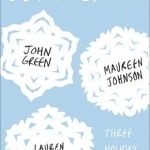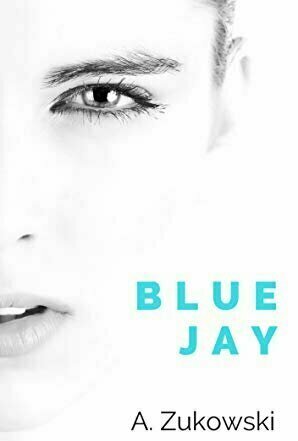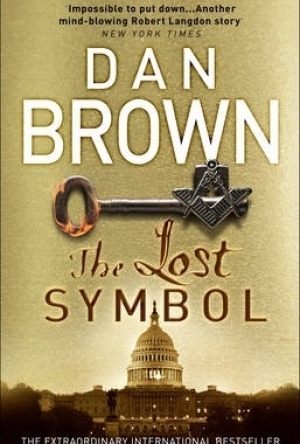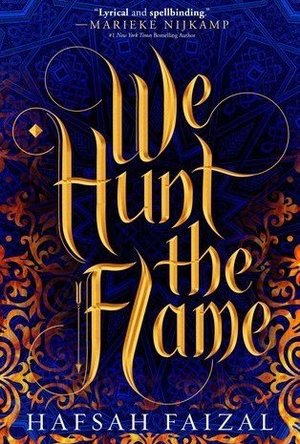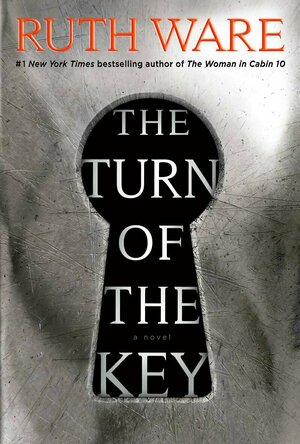Search
Search results
Amy Christmas (171 KP) rated Let it Snow in Books
Dec 28, 2018
The last story was quite shoddy (4/10) (1 more)
The patron saint of pigs
A mixed bag of stories.
Contains spoilers, click to show
I had to read this at Christmas time, there is no other way, and at first I really quite enjoyed it, the first story The Jubilee Express was really quite something, I loved jubilee's character and her situation with her parents in prison and being shipped off to Florida. At this point Jeb who she meets on the train seems like a really 2D character (and will co time to be for the entire book) I was dissapointed in Jeb's character as there was a lot more potential there but no purpose from the 3 authors. However Jubilee I loved her motives and personality was great and the way that the story flowed from the train into the waffle house and meeting Stuart was great. The Jubilee Express was filled with weird and wonderful characters and a beautiful ending.
It goes down hill from here.
I've never read anything by John Green but I was dissapointed by his segment. The love between Tobin and The Duke is rushed and fake as hell. It didn't feel realistic in any sense of the word, the love in Twilight was better written. The adventure we follow with Tobin is good and enjoyable but the love aspect is not at all. I wanted this segment over with ASAP.
Then the patron saint of pigs, god. I despised Addie. I get that this short story was meant to be a moral story on being selfless etc etc but I got to the end of the story and again was drowned in superficial love that holds no weight or realism. In the end Addie is just forgiven for all that she has done in the past but we see no real change in her thinking. By the end she still constantly acts in her own interests, she only picks up the pig to prove to her friends that she isn't selfish and self absorbed. However the atmosphere of this last story was nice seeing all the stories fully converge.
However I only truly loved The Jubilee Express.
The rest felt heartless and 2D.
It goes down hill from here.
I've never read anything by John Green but I was dissapointed by his segment. The love between Tobin and The Duke is rushed and fake as hell. It didn't feel realistic in any sense of the word, the love in Twilight was better written. The adventure we follow with Tobin is good and enjoyable but the love aspect is not at all. I wanted this segment over with ASAP.
Then the patron saint of pigs, god. I despised Addie. I get that this short story was meant to be a moral story on being selfless etc etc but I got to the end of the story and again was drowned in superficial love that holds no weight or realism. In the end Addie is just forgiven for all that she has done in the past but we see no real change in her thinking. By the end she still constantly acts in her own interests, she only picks up the pig to prove to her friends that she isn't selfish and self absorbed. However the atmosphere of this last story was nice seeing all the stories fully converge.
However I only truly loved The Jubilee Express.
The rest felt heartless and 2D.
Merissa (13681 KP) rated Blue Jay (London Stories #3) in Books
Oct 28, 2019
Blue Jay is the third book in the London Stories series. Chris featured in Liam and Ali's story, but now he has his own. Alex has just come out of the prison, with secrets he doesn't want to share.
Oh my. Seriously!!! This is an amazing book and a brilliant addition to the series. Alex is most definitely a gentle giant who has made mistakes and has no intention of repeating them. Once you have a place in his heart, that's it. You're there for life. And Chris finds himself there, he just doesn't understand how. Their relationship is smooth and gentle, which considering their pasts is absolutely the way to go. The most obvious thing is it shows just how much Chris thinks of Alex, even if he won't admit it. Alex is a rock though, and isn't willing to let Chris push him away.
There are a whole host of characters in this book that you will either love or loathe. I loved Dex, but Alex's family grated on me until towards the end. The same with Chris' mum, Annette. I won't tell you how big the smile was on my face with one of the last scenes between her and Chris. You'll just have to read it for yourself, and figure out why I was smiling!
I loved how Chris' pronouns changed dependent upon their mood, and I ADORED that Alex accepted it all - no judgements, only questions to try and help him understand. This was written as first person, present tense, which isn't my favourite way of reading. It does help with getting into the mind of the character, but sometimes I wasn't ready for it to change. Even so, it was a fantastic book that I thoroughly enjoyed, and I have no hesitation in recommending it or the series as a whole. Perfect for those who like their romance a little darker.
* A copy of this book was provided to me with no requirements for a review. I voluntarily read this book, and the comments here are my honest opinion. *
Merissa
Archaeolibrarian - I Dig Good Books!
Oh my. Seriously!!! This is an amazing book and a brilliant addition to the series. Alex is most definitely a gentle giant who has made mistakes and has no intention of repeating them. Once you have a place in his heart, that's it. You're there for life. And Chris finds himself there, he just doesn't understand how. Their relationship is smooth and gentle, which considering their pasts is absolutely the way to go. The most obvious thing is it shows just how much Chris thinks of Alex, even if he won't admit it. Alex is a rock though, and isn't willing to let Chris push him away.
There are a whole host of characters in this book that you will either love or loathe. I loved Dex, but Alex's family grated on me until towards the end. The same with Chris' mum, Annette. I won't tell you how big the smile was on my face with one of the last scenes between her and Chris. You'll just have to read it for yourself, and figure out why I was smiling!
I loved how Chris' pronouns changed dependent upon their mood, and I ADORED that Alex accepted it all - no judgements, only questions to try and help him understand. This was written as first person, present tense, which isn't my favourite way of reading. It does help with getting into the mind of the character, but sometimes I wasn't ready for it to change. Even so, it was a fantastic book that I thoroughly enjoyed, and I have no hesitation in recommending it or the series as a whole. Perfect for those who like their romance a little darker.
* A copy of this book was provided to me with no requirements for a review. I voluntarily read this book, and the comments here are my honest opinion. *
Merissa
Archaeolibrarian - I Dig Good Books!
Corey Richard Bennett (10 KP) rated The Lost Symbol: (Robert Langdon Book 3) in Books
Jul 19, 2019
Drags on after action ends (1 more)
Unsatisfactory ending
Contains spoilers, click to show
Okay, so the third book in the Robert Langdon takes Robert through Washington D.C. as he tries to save a friend, who has been taken hostage. With help from the hostage's sister, Robert unravels a secret path by the Freemasons. Long story short, Robert saves his friend gets the girl and learns truths of the Freemasons no else has.
So overall the story is typical Dan Brown. Twists and turns at every turn, switching views from each chapter. Robert does Robert stuff with figuring everything out in due time. (By the way, I can't read these without thinking of Tom Hanks being Langdon anymore).
But the one thing I want to focus on is the villain. He is by far the most compelling part of this whole book. Spoiler is he dies about 3/4ths of the book in and once he is gone, that dragging on feeling sets in. There is no trouble, no sense of urgency and the book dies off after that for me. But back to our villain. He is revealed to be Mr. Hostage's son who was once thought dead, but more like transformed into a whole different person. You learn that he came from money, went to prison, is left there by his father, fakes his death, and then tries to steal a family heirloom he feels will help him unlock the secrets of Freemasonry and being the perfect human. My one gripe is Dan Brown pretty much tells you it's not the son, and then says oh yeah it is the son. There's a difference from being sneaky, and just lying to create suspense. Oh well, but before his death, the son is cunning, stealthy, and barbaric (drowning an assistant for a key card). He is a very interesting character and you do miss him once he is killed.
Overall its an okay book, but Inferno or Da Vinci Code were better stories, but if you like U.S. History, it should kill some time for you and keep you enthralled for most the book.
So overall the story is typical Dan Brown. Twists and turns at every turn, switching views from each chapter. Robert does Robert stuff with figuring everything out in due time. (By the way, I can't read these without thinking of Tom Hanks being Langdon anymore).
But the one thing I want to focus on is the villain. He is by far the most compelling part of this whole book. Spoiler is he dies about 3/4ths of the book in and once he is gone, that dragging on feeling sets in. There is no trouble, no sense of urgency and the book dies off after that for me. But back to our villain. He is revealed to be Mr. Hostage's son who was once thought dead, but more like transformed into a whole different person. You learn that he came from money, went to prison, is left there by his father, fakes his death, and then tries to steal a family heirloom he feels will help him unlock the secrets of Freemasonry and being the perfect human. My one gripe is Dan Brown pretty much tells you it's not the son, and then says oh yeah it is the son. There's a difference from being sneaky, and just lying to create suspense. Oh well, but before his death, the son is cunning, stealthy, and barbaric (drowning an assistant for a key card). He is a very interesting character and you do miss him once he is killed.
Overall its an okay book, but Inferno or Da Vinci Code were better stories, but if you like U.S. History, it should kill some time for you and keep you enthralled for most the book.
Goddess in the Stacks (553 KP) rated We Hunt The Flame (Sands of Arawiya #1) in Books
Jul 23, 2019
This is the first book in a planned duology, and I NEED THE SECOND ONE RIGHT NOW. Zafira is a firecracker, and Nasir is a precious gumdrop, and Altair is a mystery, while I can't help but read Kifah as Valkyrie from Avengers. (Seriously, if this ever gets made into a movie and Tessa Thompson DOESN'T get cast as Kifah, I'll be upset.)
These characters, and this setting, and this worldbuilding, and this plot...Faizal has blown me away with this book. There are twists I saw coming, and some I did not, so I'm not going to go into much detail about the plot, but Zafira and a few other people are searching for a magical artifact to restore magic to their kingdom, after it was locked away many years ago. I don't remember exactly how long it's been; Zafira can't remember having magic, but she does mention at one point that her mother was a healer. So sometime during her mother's lifetime? The kingdom has been cursed in the absence of magic, different curses for the different districts, and the Arz is a magical forest encroaching on the borders. Almost no one who goes into the Arz ever comes out again, so it's incredibly dangerous for anyone who isn't Zafira. Zafira has the unique ability to always know which direction she needs to go to reach her goal, and it's this ability that brings her to the attention of the Silver Witch, who sets her on the path to find the artifact. The artifact is, of course, on the enchanted island that serves as a prison for all the magical objects and creatures, so Zafira and her companions face all kinds of unknown dangers.
I really enjoyed basically everything about this book. There was character development, a touch of romance, a team learning to work as a team, secrets, magic, ancient evils, trauma and emotional work...just a lot. (Also enemies-to-lovers, if you're into that.) It is a brilliant epic fantasy, and I cannot WAIT for the second book. I need to know what happens! (It doesn't end on a cliffhanger, exactly, but things are definitely NOT. RESOLVED.)
You can find all my reviews and more at http://goddessinthestacks.com
These characters, and this setting, and this worldbuilding, and this plot...Faizal has blown me away with this book. There are twists I saw coming, and some I did not, so I'm not going to go into much detail about the plot, but Zafira and a few other people are searching for a magical artifact to restore magic to their kingdom, after it was locked away many years ago. I don't remember exactly how long it's been; Zafira can't remember having magic, but she does mention at one point that her mother was a healer. So sometime during her mother's lifetime? The kingdom has been cursed in the absence of magic, different curses for the different districts, and the Arz is a magical forest encroaching on the borders. Almost no one who goes into the Arz ever comes out again, so it's incredibly dangerous for anyone who isn't Zafira. Zafira has the unique ability to always know which direction she needs to go to reach her goal, and it's this ability that brings her to the attention of the Silver Witch, who sets her on the path to find the artifact. The artifact is, of course, on the enchanted island that serves as a prison for all the magical objects and creatures, so Zafira and her companions face all kinds of unknown dangers.
I really enjoyed basically everything about this book. There was character development, a touch of romance, a team learning to work as a team, secrets, magic, ancient evils, trauma and emotional work...just a lot. (Also enemies-to-lovers, if you're into that.) It is a brilliant epic fantasy, and I cannot WAIT for the second book. I need to know what happens! (It doesn't end on a cliffhanger, exactly, but things are definitely NOT. RESOLVED.)
You can find all my reviews and more at http://goddessinthestacks.com
Eleanor (1463 KP) rated The Turn of The Key in Books
Dec 16, 2019
An Interesting Twist to a Familiar Tale
This suspense thriller was a close one for me but ultimately it just didn’t totally click. I listened to the audio version narrated by Inogen Church, who seemed to be a talented narrator just unfortunate that the person she was narrating was so irritating to me. The writing was of a high standard and I’ll certainly be looking at more of Ruth Ware’s work.
When Rowan takes a live-in nanny position in a remote Scottish she is soon faced with more than just the usual new nanny woes. The house has been converted into a modern all bells and whistles smart home, but it’s not exactly making life easier for Rowan. The book is told via the correspondence between Rowan and a solicitor from her prison cell following her arrest for the death of one of her charges. The result is a slow build of difficult circumstances from her perspective and a strong denial of any responsibility…. but what did happen?
This is a solid suspense thriller with plenty of creepy atmosphere in it and I can imagine some people will really love this book. For me, though I just kept getting a bit irritated. I’m not a big fan of kids (I know - burn the witch!!) and there are some prime examples of why that is in this book from the brats. Why someone would want to be a nanny is beyond me so Rowan is very hard to relate to. I really couldn’t care less about the routines of children. I’m also not a fan of having a narrator who constantly hints towards things not being as they seem but not clarifying until the “big reveal” troupe. So maybe just not the best book for me, in particular, to pick up.
Smart home things like speakers, voice-activated lights, fridges curtains, etc don’t do anything for me and the fact they added to the creepiness of Rowan’s situation was an interesting approach. Ultimately a book that many will love but just not my kinda story, so can’t get too pumped for it.
When Rowan takes a live-in nanny position in a remote Scottish she is soon faced with more than just the usual new nanny woes. The house has been converted into a modern all bells and whistles smart home, but it’s not exactly making life easier for Rowan. The book is told via the correspondence between Rowan and a solicitor from her prison cell following her arrest for the death of one of her charges. The result is a slow build of difficult circumstances from her perspective and a strong denial of any responsibility…. but what did happen?
This is a solid suspense thriller with plenty of creepy atmosphere in it and I can imagine some people will really love this book. For me, though I just kept getting a bit irritated. I’m not a big fan of kids (I know - burn the witch!!) and there are some prime examples of why that is in this book from the brats. Why someone would want to be a nanny is beyond me so Rowan is very hard to relate to. I really couldn’t care less about the routines of children. I’m also not a fan of having a narrator who constantly hints towards things not being as they seem but not clarifying until the “big reveal” troupe. So maybe just not the best book for me, in particular, to pick up.
Smart home things like speakers, voice-activated lights, fridges curtains, etc don’t do anything for me and the fact they added to the creepiness of Rowan’s situation was an interesting approach. Ultimately a book that many will love but just not my kinda story, so can’t get too pumped for it.
Sophia (Bookwyrming Thoughts) (530 KP) rated Dragon Marked (Supernatural Prison, #1) in Books
Jan 23, 2020
<a href="http://www.inwonderlandbookblog.com/2016/04/dragon-marked-review.html"; target="_blank">This review was originally posted on In Wonderland</a><p style="text-align: left;"><span style="line-height: 1.5;">Coolest book about supernaturals ever?</span>
Erm… it could go both ways.
What I Liked:
~ Jessa has spunk and no filter. She has no problems giving people her two cents.
Dragon shifters are awesome, hands down.
~ The concept – a supernatural community just to guard a prison for supernatural criminals? Oh, and those prisons are being broken into and no one knows <em>how</em>? Plus, the main character is dragon marked (prophesized to raise some sort of dragon king of a thousand years ago) and the Quads (aka four brothers who turn heads everywhere they turn) are <em>supposed</em> to hunt and kill her? Grabby hands ensues. <del>Because I just adore potential best friends turned murderer type of stories.</del>
~ Possessiveness: I normally really hate possessiveness, but Jaymin Eve doesn’t <em>overplay</em> it. Possessiveness is a part of the culture for the supernaturals, but Jessa isn’t sheltered.
What I Didn’t Like:
~ Does anyone have a problem with an entire family ruling most of the American Supernatural council? I mean, there’s a scuffle or two that carries as the main plot of the first book, but for the most part, almost everyone is completely okay with the Quads taking over 4/5 of the council.
~ Every page or two (maybe a little more), there’s a bomb of information about the supernaturals. Some are repetitive with the usual tropes, but I <em>might</em> be okay with that. Just a little.
~ Eve has humor throughout the book, but um… too much information sometimes. It doesn’t clash too well with Jessa’s personality. No filter humor? Little kid guilty of peeking at the wrong time.
All in all,<em> Dragon Marked</em> does have potential. But while there might be one plot in just one book, the overall arc of the story is primarily set up with lots of information.
And tootles to everyone who handles a no filter main character with the occasional weird humor better than me.
Erm… it could go both ways.
What I Liked:
~ Jessa has spunk and no filter. She has no problems giving people her two cents.
Dragon shifters are awesome, hands down.
~ The concept – a supernatural community just to guard a prison for supernatural criminals? Oh, and those prisons are being broken into and no one knows <em>how</em>? Plus, the main character is dragon marked (prophesized to raise some sort of dragon king of a thousand years ago) and the Quads (aka four brothers who turn heads everywhere they turn) are <em>supposed</em> to hunt and kill her? Grabby hands ensues. <del>Because I just adore potential best friends turned murderer type of stories.</del>
~ Possessiveness: I normally really hate possessiveness, but Jaymin Eve doesn’t <em>overplay</em> it. Possessiveness is a part of the culture for the supernaturals, but Jessa isn’t sheltered.
What I Didn’t Like:
~ Does anyone have a problem with an entire family ruling most of the American Supernatural council? I mean, there’s a scuffle or two that carries as the main plot of the first book, but for the most part, almost everyone is completely okay with the Quads taking over 4/5 of the council.
~ Every page or two (maybe a little more), there’s a bomb of information about the supernaturals. Some are repetitive with the usual tropes, but I <em>might</em> be okay with that. Just a little.
~ Eve has humor throughout the book, but um… too much information sometimes. It doesn’t clash too well with Jessa’s personality. No filter humor? Little kid guilty of peeking at the wrong time.
All in all,<em> Dragon Marked</em> does have potential. But while there might be one plot in just one book, the overall arc of the story is primarily set up with lots of information.
And tootles to everyone who handles a no filter main character with the occasional weird humor better than me.
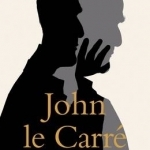
The Pigeon Tunnel: Stories from My Life
Book
'Out of the secret world I once knew, I have tried to make a theatre for the larger worlds we...

Born a Crime: Stories from a South African Childhood
Book
The compelling, inspiring, (often comic) coming-of-age story of Trevor Noah, set during the twilight...
GT
Globalization: The Human Consequences
Book
The word "globalization" is used to convey the hope and determination of order-making on a worldwide...
